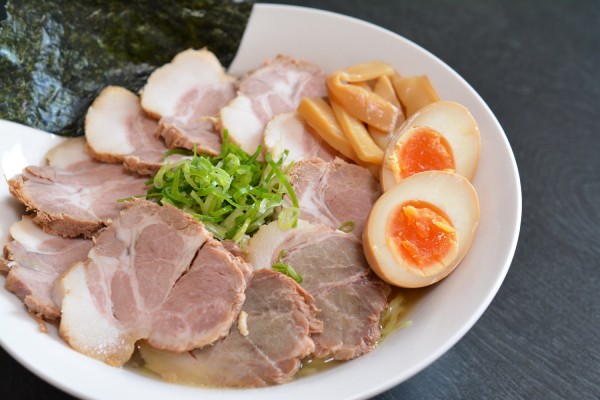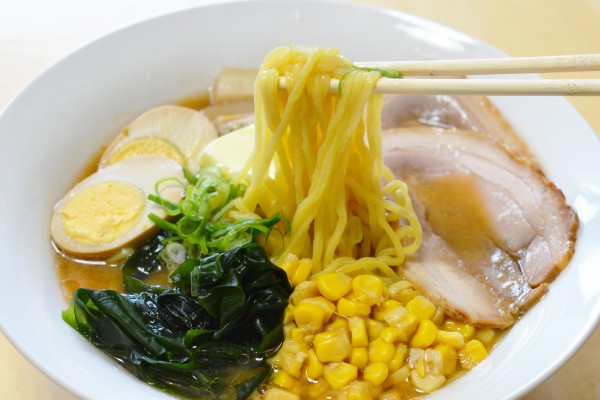About Japanese Ramen.
Ramen is one of the most iconic and beloved dishes in Japan. Japanese ramen has evolved into a uniquely Japanese food culture, rich in variety, regional styles, and deep-rooted popularity across all generations. In Japan, ramen ranges from casual comfort food to a serious passion for foodies.
Japanese ramen culture represents one of the country’s most cherished and deeply ingrained food traditions. It transcends the idea of simple noodle soup, becoming a cultural phenomenon that reflects Japanese values of craftsmanship, comfort, and community.
Ramen is one of the most iconic and beloved dishes in Japan. Ramen is far more than just noodles in broth; it's a culinary art form deeply embedded in Japanese culture. At its core, ramen is a Japanese noodle soup dish, but the variations are endless, making each bowl a unique experience. While it originated in China, Japan has truly made it its own, developing distinct regional styles and a passionate following.
The Image of Ramen in Japan
In Japan, ramen holds a special place. It is much more than a quick meal — it's a culinary experience. It's often seen as a comfort food, a quick and satisfying meal, and even a nostalgic taste of home. It's accessible to everyone, from students to businesspeople, and evokes feelings of warmth and contentment. For many, it's a go-to for a quick lunch, a hearty dinner after a long day, or a late-night treat. While some high-end ramen shops exist, it generally maintains an image of being delicious, affordable, and unpretentious. You'll find everything from tiny local ramen joints to high-end specialty shops that attract long lines and even Michelin recognition.
Ramen's appeal is incredibly broad. You'll find it enjoyed by:
Students and Young Adults
Its affordability and satisfying nature make it a perfect choice for those on a budget or looking for a quick, filling meal.
Office Workers
Many salarymen and office ladies grab a bowl for a quick and delicious lunch break.
Families
Ramen shops are often welcoming to families, offering a tasty option for all ages.
Tourists
Visitors to Japan are eager to experience authentic ramen as part of their cultural immersion.
Food Enthusiasts
Serious foodies seek out highly-rated shops and unique regional variations, often traveling specifically for their ramen pilgrimage.
Anyone seeking comfort food
On a cold day, after a long journey, or simply when craving something warm and delicious, ramen hits the spot.
Just about everyone! From students and office workers looking for a quick, satisfying lunch, to tourists and ramen enthusiasts who travel across the country to try regional varieties, ramen has universal appeal.
Types of Ramen: A Deep Dive into Regional and Stylistic Varieties

Ramen comes in countless forms, but the four main types of broth are shoyu (soy sauce), miso (fermented soybean paste), shio (salt), and tonkotsu (pork bone). On top of that, each region in Japan has its own unique take — from Hokkaido’s hearty miso ramen topped with butter and corn, to Kyushu’s creamy tonkotsu ramen with thin, firm noodles.
The beauty of ramen lies in its incredible diversity, primarily categorized by its broth base, but also by specific regional traditions and unique shop styles.
1) Main Broth Categories:
Shoyu (Soy Sauce-based)
Often considered the original, shoyu ramen typically features a clear, brown broth made with chicken or vegetable stock and seasoned with soy sauce. It's savory and approachable.
Shio (Salt-based)
This broth is typically clear and light, seasoned primarily with salt. It's often made with chicken or seafood stock, allowing the natural flavors of the ingredients to shine through.
Miso (Soybean Paste-based)
Originating from Hokkaido, miso ramen has a thicker, more robust, and often nutty flavor. The miso paste is dissolved into the broth, creating a rich and aromatic experience.
Tonkotsu (Pork Bone-based)
A creamy, opaque white broth made from simmering pork bones for many hours, resulting in a rich, collagen-rich, and deeply flavorful soup. It's incredibly popular, especially in Kyushu.
Beyond these main types, you'll find countless regional variations, toppings (like chashu pork, ajitama egg, menma bamboo shoots, and nori seaweed), and noodle textures that contribute to the endless possibilities.
2) Famous Regional Ramen (ご当地ラーメン - Gotouchi Ramen):
Japan boasts a fantastic array of regional ramen styles, each with its own distinct characteristics:
Kyushu Tonkotsu (九州豚骨)
Originating from Fukuoka in Kyushu, this is arguably the most famous tonkotsu style. It's characterized by its incredibly rich, milky, and often pungent pork bone broth. The noodles are typically thin and straight, and common toppings include thinly sliced pork, green onions, and pickled ginger. Many shops offer "kae-dama" (替え玉), allowing you to order extra noodles for your remaining broth.
Sapporo Miso (札幌味噌)
Hailing from Sapporo, Hokkaido, this style is synonymous with miso ramen. It features a hearty, rich miso-based broth, often stir-fried with vegetables like cabbage and bean sprouts before the broth is added, giving it a unique smoky flavor. Toppings often include corn, butter, and chashu. Its richness is perfect for Hokkaido's colder climate.
Kitakata Ramen (喜多方ラーメン)
From Fukushima Prefecture, Kitakata ramen is known for its distinctive flat, wavy, hand-kneaded noodles that are chewy and absorb the light, clear shoyu-based broth wonderfully. The broth is usually made from pork and niboshi (dried sardines), offering a subtle yet deep flavor.
Tokyo Shoyu (東京醤油)
While not a single, strict style, "Tokyo ramen" often refers to a classic, clear, shoyu-based broth made with chicken or pork stock, often enhanced with niboshi. It's a foundational style, with medium-wavy noodles and classic toppings like chashu, menma, and narutomaki (fish cake).
3) Popular Stylistic Ramen:
Beyond regional varieties, certain ramen "schools" or styles have emerged and gained immense popularity:
Iekei Ramen (家系ラーメン)
Developed in Yokohama, "Iekei" (meaning "house style" as many shop names end with "-ya" like Yoshimura-ya) is a hybrid style. It combines a rich, thick tonkotsu-shoyu (pork bone and soy sauce) broth with thick, straight noodles. It's served with spinach, large sheets of nori seaweed, and chashu. Customers can often customize the richness of the broth, the amount of oil, and the firmness of the noodles. It's known for its strong, addictive flavor profile.
Jiro-kei Ramen (二郎系ラーメン)
Named after the legendary Ramen Jiro chain, this style is famous for its massive portions and strong flavors. Jiro ramen features a shoyu-based tonkotsu broth that is very rich and often has a layer of pork back fat. It comes with a mountain of blanched bean sprouts and cabbage, thick, chewy noodles, and generous slabs of chashu. Customers can often specify amounts of garlic, vegetables, and fat. It's an intense, cult-favorite experience, not for the faint of heart!
Young people often enjoy rich, bold flavors like tonkotsu (pork bone broth), while older generations might prefer lighter options like shoyu (soy sauce) or shio (salt-based) ramen.
When Do People Eat Ramen?
Ramen is incredibly versatile in terms of when it's consumed:
Lunch
A very popular choice for a quick and satisfying midday meal.
Dinner
A comforting and hearty option for an evening meal.
Late Night
After a night out, a hot bowl of ramen is a common and cherished way to end the evening.
As a Treat
It's often seen as a delicious indulgence, whether after work, on a weekend, or simply when a craving strikes.
One of ramen's appealing aspects is its accessibility. In Japan, a bowl of ramen typically ranges from ¥700 to ¥1,200 (roughly $4.50 - $8.00 USD). Of course, prices can vary depending on the shop's reputation, location, and the type of ramen or additional toppings you choose. This affordability makes it a go-to option for everyday dining.

Ramen's immense popularity stems from several factors:
Flavor Complexity
The depth of flavor in ramen broths, developed through hours of simmering and precise seasoning, is simply unmatched. Each bowl offers a symphony of umami, savory, and aromatic notes.
Variety
With countless regional styles, broth types, noodle textures, and toppings, there's a ramen for every palate and preference. It's a dish that never gets boring.
Comfort and Satisfaction
Ramen is inherently a warm, filling, and deeply satisfying meal. It provides a sense of comfort and well-being.
Cultural Experience
For many, eating ramen is an authentic Japanese experience, connecting them to the country's culinary traditions.
Accessibility
It's generally affordable and widely available, making it an easy and frequent choice for people from all walks of life.
Craftsmanship
Behind each bowl is often a dedicated chef who has honed their skills over years, striving for perfection in every element, from the broth to the noodles and toppings.
It’s a perfect blend of comfort, customization, and craft. Each shop takes pride in its own secret recipe, and customers can tailor their bowl with toppings like soft-boiled eggs, chashu (braised pork), bamboo shoots, and nori (seaweed). The combination of rich flavor, satisfying texture, and cultural depth makes ramen a deeply loved part of daily life in Japan. The endless variety means there's always something new to discover, appealing to Japanese appreciation for seasonal changes and regional diversity.
Ramen isn't just food; it's a cultural phenomenon that continues to captivate hearts and taste buds around the globe. Whether you're slurping noodles at a bustling Tokyo ramen street or discovering a tiny countryside ramen shop, you're not just eating — you're tasting a part of Japan's culinary soul.
update